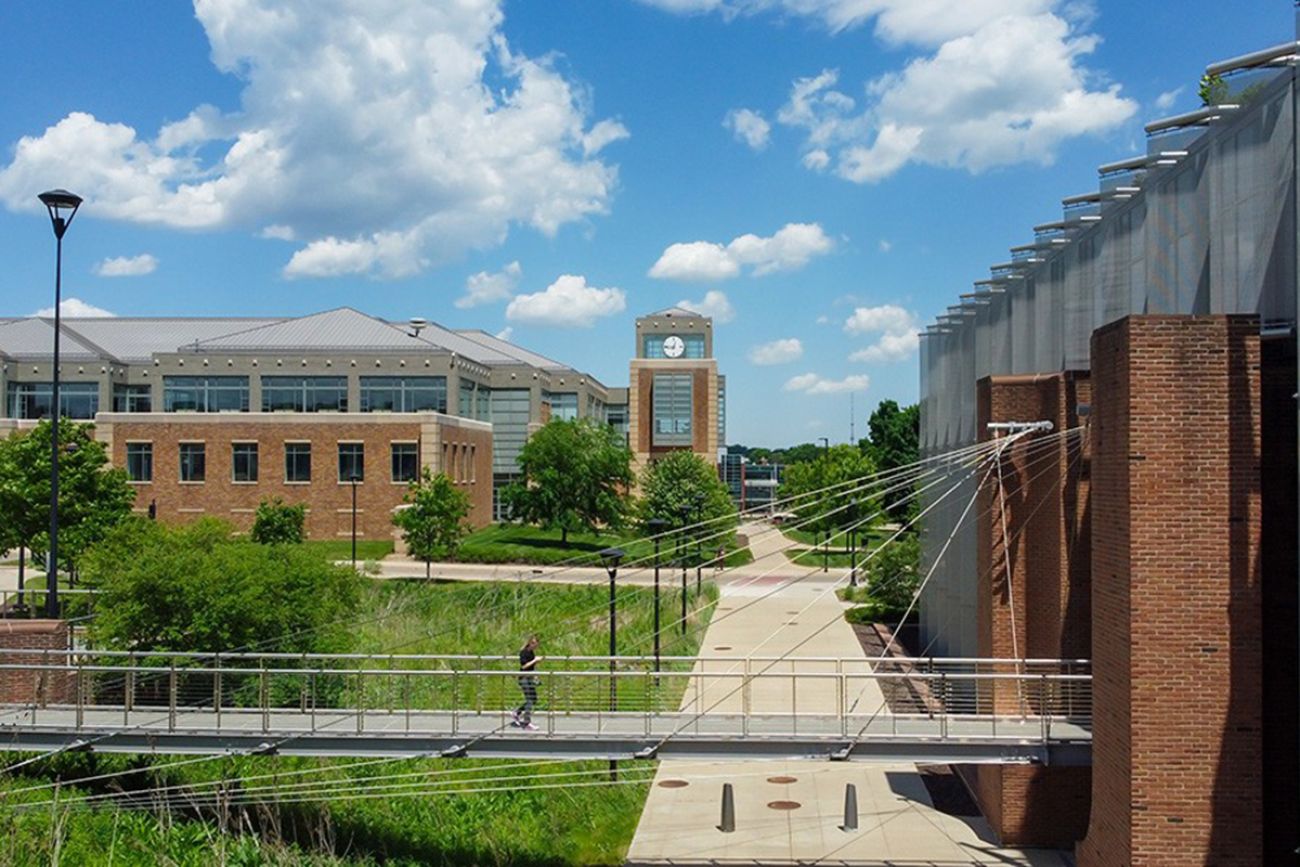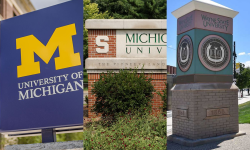Michigan universities lost first-year students. Decline was worse nationwide

- Michigan public universities have more first-year students than during the pandemic but less than last year
- A messy federal financial aid process had officials worried that enrollment would be significantly affected
- Michigan’s decline appears to be less than the national trend
After a tumultuous federal financial aid cycle, Michigan’s public universities enrolled fewer first-year students this fall than last but did not see as sharp a decline as schools nationwide.
Across the state’s 15 public universities, there are 40,764 first-year students this fall, down 1.1% from last year, according to the Michigan Association of State Universities 2024 enrollment report.
Still, the drop in first-year student enrollment is lower than that of the country as a whole, and the total student headcount is up from last year, with more students returning.
Nationally, preliminary data from the National Student Clearinghouse shows that first-year enrollment is down 5% from last fall. The data includes both private and public institutions across the country.
Compared to national declines, Michigan’s modest dip should be viewed as a “success,” according to Dan Hurley, CEO of the Michigan Association of State Universities.
Related:
- Central Michigan University taps Augusta University administrator as president
- Whitmer touts free community college. It’s not true for all Michigan kids
- Michigan college graduates make $33,400 more, but fewer students attending
Michigan enrollment “could have been better, but it absolutely could have been worse,” Hurley said.
Some Michigan schools enrolled more first-year students than last year, and the state’s two largest — Michigan State University and the University of Michigan — have each grown over the past decade.
Central Michigan University has struggled enrollment for years but enrolled 9.2% more first-year students this year. First-year student enrollment climbed 4.7% at Ferris State University, 5.7% at Saginaw Valley State and 4.1% at the University of Michigan-Flint.
The figures are the first statewide look at enrollment since the federal government’s botched rollout of a new federal financial aid form that led to delays and errors. Schools got students’ financial information later and students had less time to weigh financial aid offers from different schools.
Experts worried fewer students would seek financial aid and ultimately, attend college.
Michigan’s public universities had made gains in first-year students last year, thanks in part to a new state scholarship program that pays up to $5,500 a year for students to attend a public university.
“I do think the state, for the most part, did a really good job of fighting through this financial aid debacle,” said Grand Valley State University vice president for enrollment development and education outreach B. Donta Truss. “I think it was helped tremendously by the Michigan Achievement scholarship…we could have been in a much tougher space if we didn't have that going.”

Regional public universities have suffered enrollment declines over the last decade for a combination of reasons, including a declining birth rate that contributes to higher competition among universities and a lower share of in-state students choosing to attend college after high school graduation.
Disruptions from the COVID-19 pandemic, higher wages and the costs of college all likely play a role as well.
In total, public university first-year enrollment is higher than during the pandemic but lower than last fall.
Nationally, first-year enrollment declines were most significant at four-year schools with high proportions of undergraduate students who receive federal Pell grants, according to the National Student Clearinghouse report.
At Eastern Michigan University, there are 1,621 first-year students, down 12.5% from the previous year and 23.6% from five years ago.
“We serve a high percentage of students that require federal aid,” said vice president of enrollment management Katie Condon. “And so we may have seen an impact that was greater than some other institutions that don't serve as many students that need that federal and state aid in order to be able to go to college.”

Last year, about 48% of EMU’s first-year students were eligible for federal Pell grants, said Condon.
The university would like to return to a baseline of about 2,000 first-year students and is increasing the number of high school visits this fall, Condon said.
“Ideally, we would not see any loss in new students choosing college, especially going to our four-year publics,” she said.
Grand Valley State University had roughly a 25% increase in first-year students in fall 2023. This year, they are down from that number, but the university is still in a strong position, said Truss, the vice president for enrollment development and education outreach.
GVSU is doubling down on academic support, finding new markets in Michigan and ensuring there are good options for adult learners who did not recently graduate high school, he said.
This summer, lawmakers made changes to the Michigan Achievement Scholarship so that students who live in a community college district can attend tuition-free. It’s not yet clear whether the lower first-year counts at public universities are a reflection of students choosing to start a community college instead.
The state typically releases data on the share of Michigan high school graduates who choose to enroll in college within six months early the following year from high school graduation.
Hurley said it’s possible that regional universities will suffer enrollment declines as high school students learn more about the tuition-free community college program. But a smoother federal financial aid process could boost college enrollment overall, he said.
Michigan Education Watch
Michigan Education Watch is made possible by generous financial support from:
Subscribe to Michigan Health Watch
See what new members are saying about why they donated to Bridge Michigan:
- “In order for this information to be accurate and unbiased it must be underwritten by its readers, not by special interests.” - Larry S.
- “Not many other media sources report on the topics Bridge does.” - Susan B.
- “Your journalism is outstanding and rare these days.” - Mark S.
If you want to ensure the future of nonpartisan, nonprofit Michigan journalism, please become a member today. You, too, will be asked why you donated and maybe we'll feature your quote next time!





